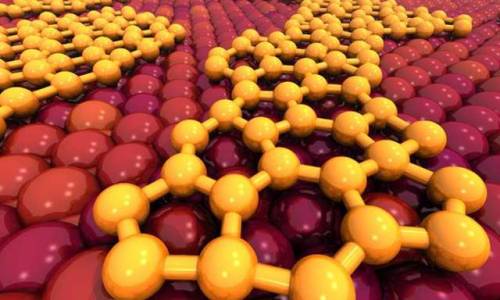#silicene
The flat and the curious
The remarkable properties of 2-D materials—made up of a single layer of atoms—have made them among the most intensely studied materials of our time. They have the potential to usher in a new generation of improved electronics, batteries and sensory devices, among other applications.
One obstacle to realizing applications of these materials is the cost and time needed for experimental studies. However, computer simulations are helping researchers overcome this challenge in order to accurately characterize material structures and functions at an accelerated pace.
At the U.S. Department of Energy’s (DOE) Argonne National Laboratory, researchers have simulated the growth of silicene, a 2-D material with attractive electronic properties. Their work, published in Nanoscale, delivers new and useful insights on the material’s properties and behavior and offers a predictive model for other researchers studying 2-D materials.
Going forward, this model can accelerate researchers’ understanding of 2-D materials, and bring us closer to realizing their applications within a wide range of industries.
Post link
Researchers developing 2-D materials similar to graphene
Chemists are working to synthesize the next generation of super materials for high-performance electronics, solar cells, photodetectors and quantum computers. While they have made progress with compound materials, they have not yet succeeded in developing unaltered or “freestanding” materials for such devices, according to a review published in the journal Science and Technology of Advanced Materials.
Graphene is a carbon material derived from graphite, the same type of material found in pencils, but it is arranged in a one-atom-thin honeycomb lattice. Discovered in 2004, graphene’s two-dimensional arrangement gives it “extraordinary” properties, including extreme strength and “marvelously high” electron conductivity.
However, the tight lattice lacks a semiconducting bandgap, which is essential for electronic devices. Therefore, scientists have been hunting for alternative materials that have bandgaps, but still have a graphene-like structure.
Much focus has been placed on graphene quantum dots, which are small segments of graphene, about 10 to 100 nm carbon hexagons across and less than 30 atomic sheets thick. To make the dots behave more like 2-D graphene, research teams have added other molecules to change the structure and function of the material.
Post link
The material is called a silicene, a layer of silicon single atoms arranged in a honeycomb pattern that was first fabricated by researchers at UOW’s Institute for Superconducting and Electronic Materials (ISEM) and their partners in Europe and China. An ISEM team led by Professor Shi Xue Dou and …



